Republican and nationalist tanks in the civil war 1936 - 1938 (part of 1)
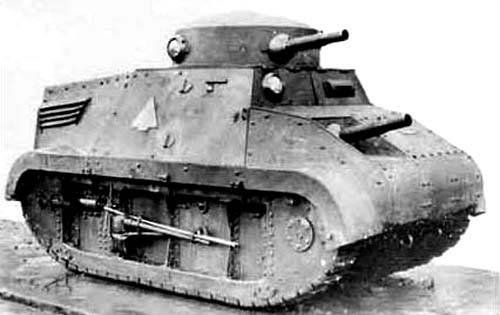
Tank "Trubia-Naval" 1936 year.
On a good road, these cars could drive at speeds up to 35 km / h, and the cruising range was equal to 75 km. Constant armament of this armored car was absent, but he had six embrasure hatches on each side (they could also be used for ventilation), through which machine guns on helicopters fired, or arrows from his personal weapons. The crew consisted of 10 people, and why so, of course. It is also clear that these cars were very primitive, but during the war in Spanish Morocco they showed themselves very well. Moreover, they were used even during the civil war!
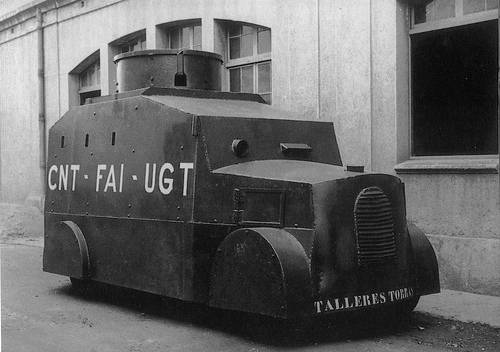
One of the homemade Spanish BA.
The first tanks the Spaniards also put France. These were the Schneider CAI tanks, which entered Spain after the end of World War I, and then the Renault FT-17, both with machine guns and cannon armament, in cast and riveted turrets. The FT-17TSF tanks, the “control tanks” equipped with a radio station in a large wheelhouse on the hull, were also delivered to them.
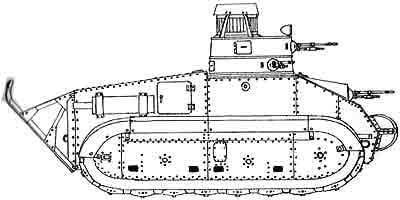
Tank "Trubia" Mod. BUT.
It makes no sense to describe this technique in more detail, since it is well known. It is only important to emphasize that the Spaniards took care of their tanks, so before the start of the fateful clash of the nationalists with the Republicans even such outdated machines as Schneiders survived.
In 20, the Spanish military decided to purchase Saint-Chamon, an experienced wheeled-tracked tank in France, and in addition to it, Citroen-Kegres-Schneider wheeled-tracked armored cars of the P-16 mod. 1929, experienced Cardin-Lloyd wedges in England and Fiat-3000 light tanks in Italy. After that, with 1926, Trubia, under the leadership of Captain Ruiz de Toledo, began work on his own Spanish tank, officially called the “high-speed infantry tank,” or “Trubia Model”. Series A ".
The tank was planned to be produced on the Renault model in both machine-gun and cannon versions, and to put on it a gun of its own design of 40-mm caliber capable of firing at 2060 m with a speed of 294 projectile. But for some reason the version with the gun failed, and the tank was decided to equip the Hotchiss system with three 7-mm machine guns under the Mauser cartridges used in Spain.
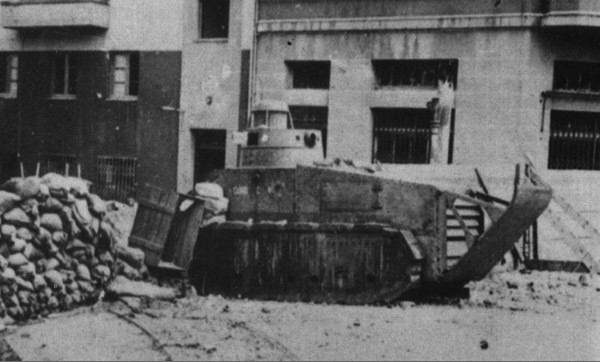
Tank "Trubiya" in battle.
Externally, the tank came out a bit similar to the "Renault", but had a lot of rather incomprehensible and strange, purely "national" features. Here, for example, in a fairly close conical turret, you can install as many as three machine guns? But this is how to make it two-tier, and so that each tier rotates independently of one another, and each tier would have its own machine gun in a ball mount, which theoretically allows you to change the firing sector without turning each tier! Very "tricky" and complex scheme, is not it? Then on the roof of the tower also put a strobe. Yes, again it was convenient: after all, the reservation surrounding the observer seems to be “melting” as the device rotates, the review turns out to be 360 °, but a special drive is needed for it. And the Trubia tower was already very close. The stroboscope itself was connected to a tower fan, for which it was provided for an armored cap above it. Another machine gun was located in the front armor sheet, as on the T-34. In the case there were two more embrasures on the side armor plates. Another feature of the tank was protruding behind the nose track tracks. His Spanish designers have equipped a narrow rink to overcome vertical obstacles. The traditional "tail" was attached to the back. They decided to fully book the undercarriage, and even close the fender with bevels. The caterpillar design was too original: a part of the tracks slid along the runners that were inside its armored bypass, while a special projection on every second track covered it outside and also slid along it!
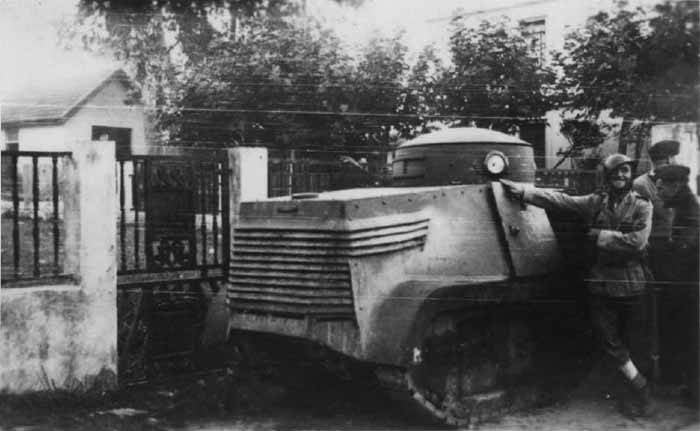
Trubia-Naval in a combat situation.
Trubia-Naval Republicans.
Such a device protected the undercarriage from dirt and stones, but due to the lack of suspension, the tank was very shaky. There were no grousers on the tracks, so Trubia’s passability was bad. In the battles in Spain, these machines were used during the defense of Oviedo and under Extremadura. It turned out that they have enough machine guns to fight in the city. But these tanks were so small that they did not play any significant role: one can say that the Spaniards just as well could not have them at all.
As for the total number of Spanish tanks, they were extremely small. Spanish historian Christian Abad Treter wrote that in July 1936 of FT-17 were 10 pieces - they were armed with a tank regiment in Madrid (Regimiento de Carros de Combate No. 1) and five more tanks were in Zaragoza (Regimiento de Carros de Combate No. 2 ). Four Schneider tanks remained in Madrid. Trubia tanks (three prototypes) were located in the Milan infantry regiment in Oviedo. Two tanks "Landes" were made at the plant "Trubia" in the city of Asturias. BA Bilbao had the most available 48 vehicles, of which the Republicans had an armored car 41, and only seven went to the nationalists.
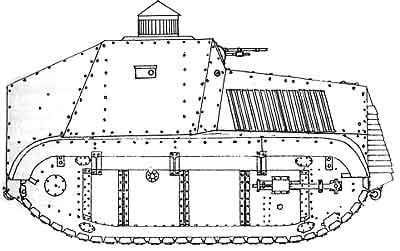
Spanish Trubia-Landes armored tractor.
During the war, the tractor Landesa was converted into a tank with a similar suspension to the Trubia. Republicans tried to make a tank "Trubia" mod. 1936. Or, as it was called “Trubia-Naval”, by the name of the plant, however, the Republicans also called it “Euskadi machine”. Well, the tank came out just very small and very light, although its crew consisted of three people. Armament - two Lewis machine guns of 7,7-mm caliber, one in the turret and the other in the hull, both in ball units. According to the project, an 47-mm caliber gun was supposed to stand in the turret, but they could not deliver it. This tank was used in battles, and even quite widely, but it was not possible to organize its mass production.
In turn, the nationalists also constantly dreamed of tanks, and their own, Spanish ones, so in 1937 they decided to create an infantry tank that surpasses both the Soviet and the vehicles of their allies, the Germans and Italians. The armor was supposed to protect it from 7,92-mm caliber armor-piercing bullets, and the armament was to "work" well, both on infantry and on enemy tanks. Marked it as CCI "Type 1937" - "battle tank infantry", and ordered a series of 30 machines.
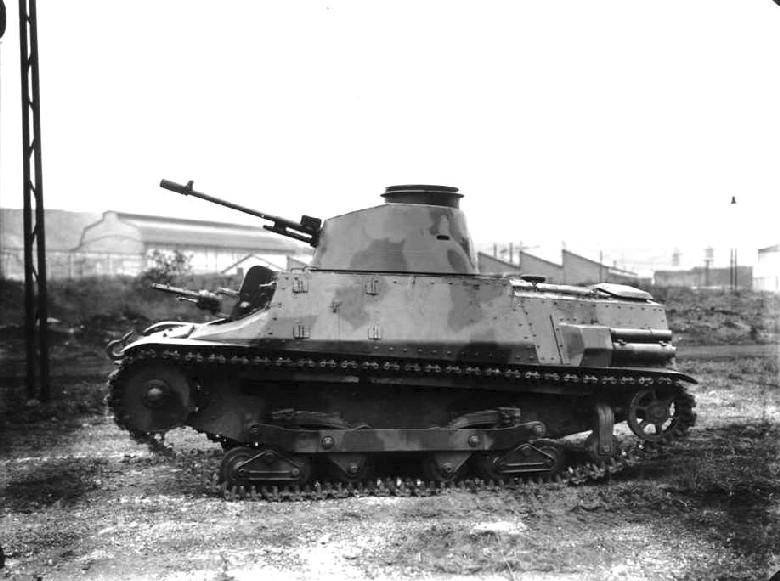
Tank CCI "Type 1937".
The designers went according to the “child constructor” principle and took the undercarriage from the Italian tanketki CV G / 35, a pair of Hochkiss 7,92-mm machine guns installed, as on this machine, but only to the right of the driver, and on top - a tower armed with an 20-mm automatic Breda cannon mod. 35-20 / 65, which has already been put on the converted German Pz.IA tanks, instead of two machine guns. The tank showed a speed of 36 km / h, and as a vehicle to support the infantry was quite convenient. In addition, he even had a diesel engine, which in some way reduced his fire hazard.
Tank "Verdeha" on trial.
After him, the “Verdeha Infantry Tank” was made, named after its creator, artillery captain of the nationalist army, Felix Verdech. The work on it began in October 1938, and in the spring of 1939, it was already sent for testing. a part was copied from the T-26 tank, but the engine-transmission compartment was put in front, and the driver was seated behind him, like on a Merkava tank.
Tank "Verdeha" overcomes a steep slope.
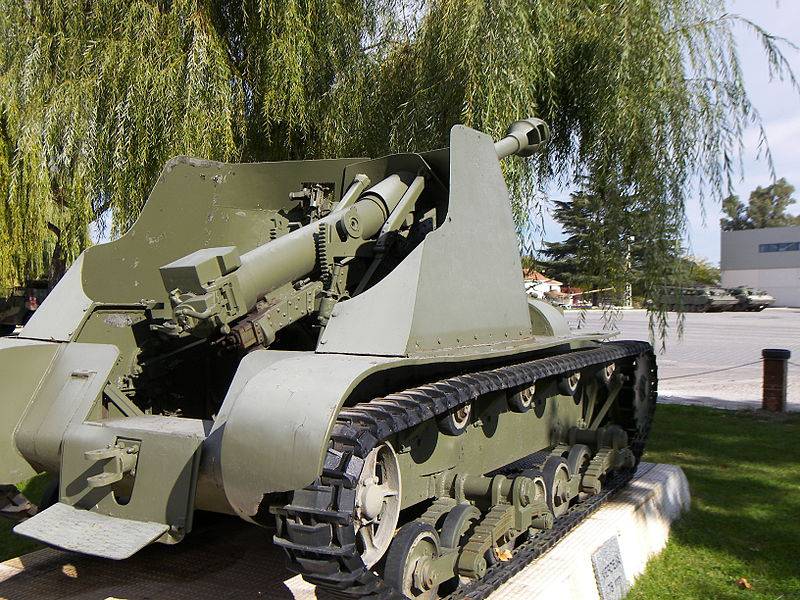
The ACS with an 75-mm gun on the chassis of the Verdeha tank. Back view.
The ACS with an 75-mm gun on the chassis of the Verdeha tank. Front view.
The gun was on it was Soviet, 45-mm, and on the sides of the gun - two machine guns - German Dreyse MG-13. The tank had a turret similar to the turret from the German tank Pz.I, but with an increased size armor in which the cannon pins were installed. There is a photograph in which on this tank you can see the tower with its double doors on its sides. The tank was a quarter lower than the Soviet T-26. The armor of the turret was 16 mm, and the hull frontal armor was 30 mm. It was planned to release an ACS with an 75-mm gun on the chassis of this car. But the economic situation in Spain was such that neither the tanks nor the ACS on their base could produce it and was content with the Soviet captured T-26 and BT-5.
Tank "Verdeha" and T-26.
Tanks "Vikkers-6" also fought in Spain. At 1937, they entered Spain from ... Paraguay, because its president sold many Republican armies and tanks of this type, which became Paraguay's trophies in the war with Bolivia. Three tanks belonged to type "A" - that is, they were machine guns, one tank to type "B" - cannon. Interestingly, among the Soviet T-26, delivered to Spain, judging by the photos, several cars belonged to the double-turret type.
Trubia-Naval Nationalists.
(Fig. A. Sheps)
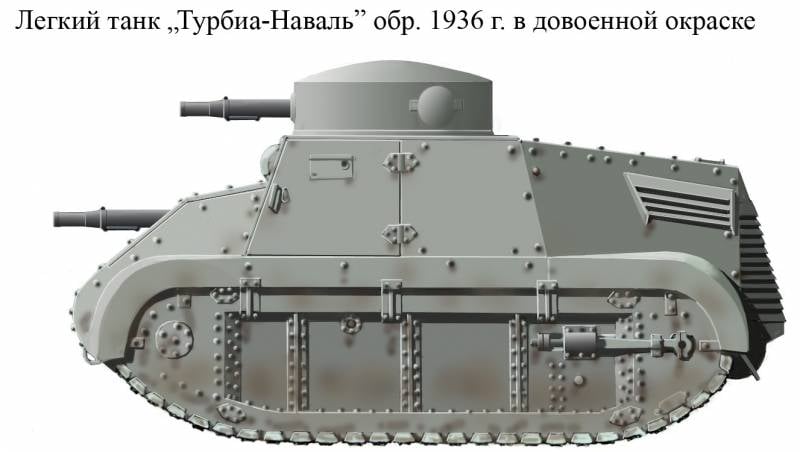
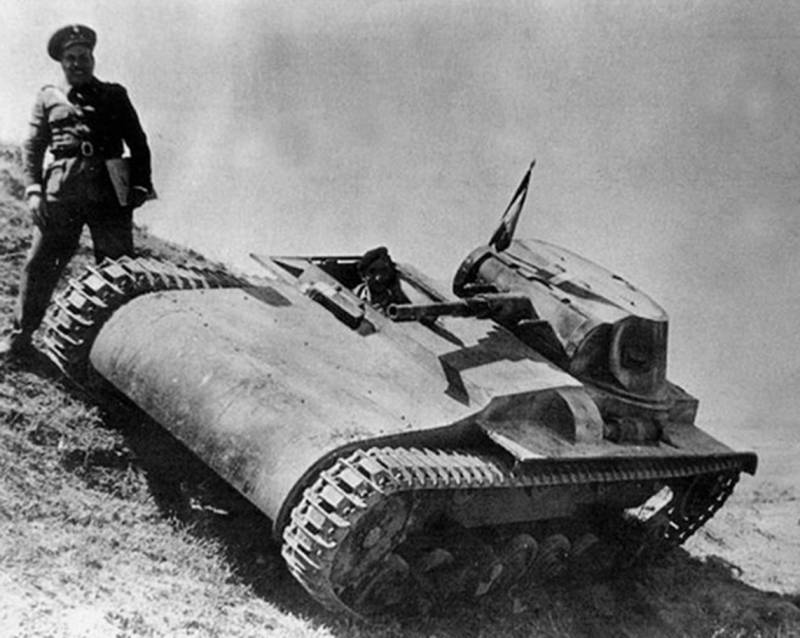
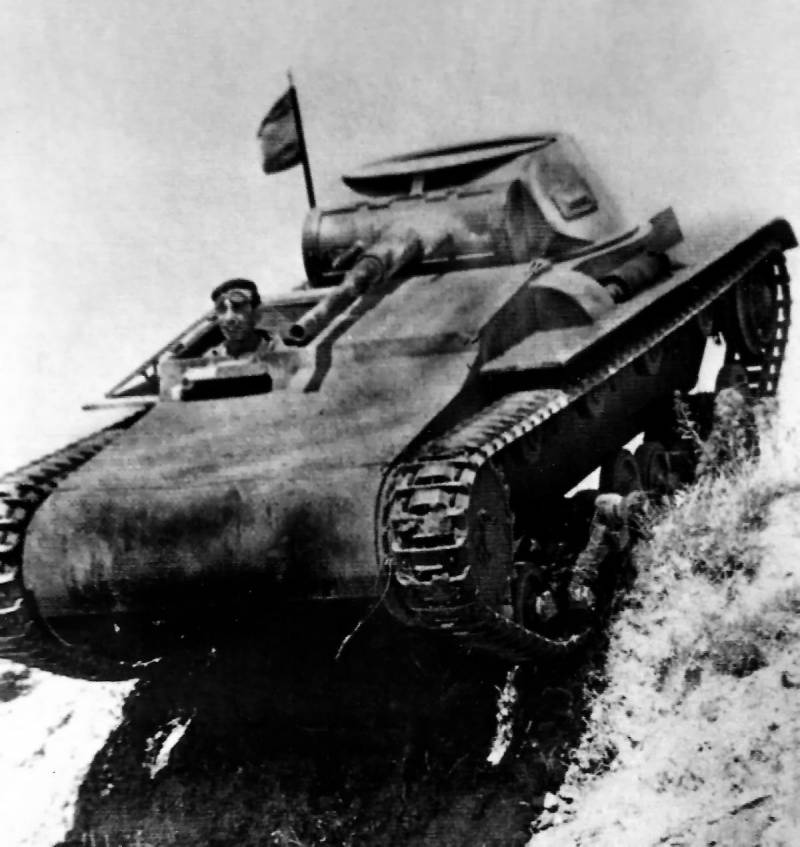
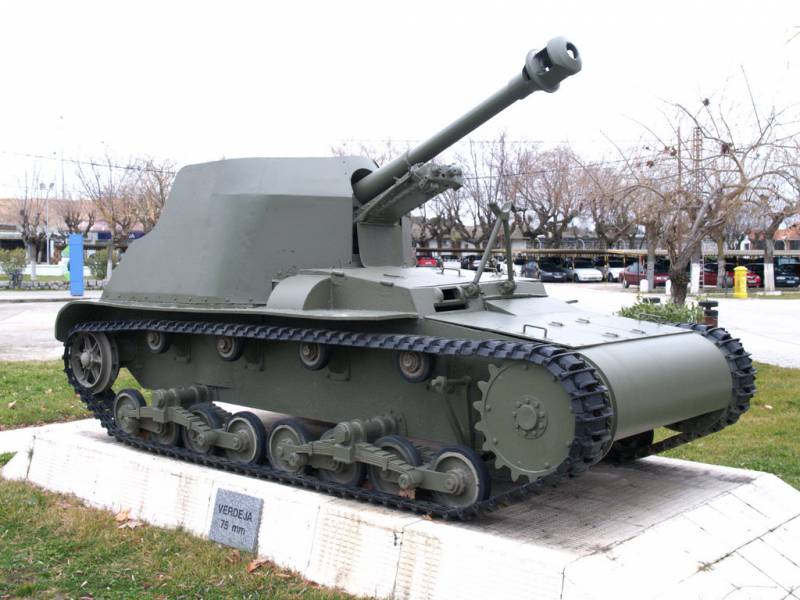
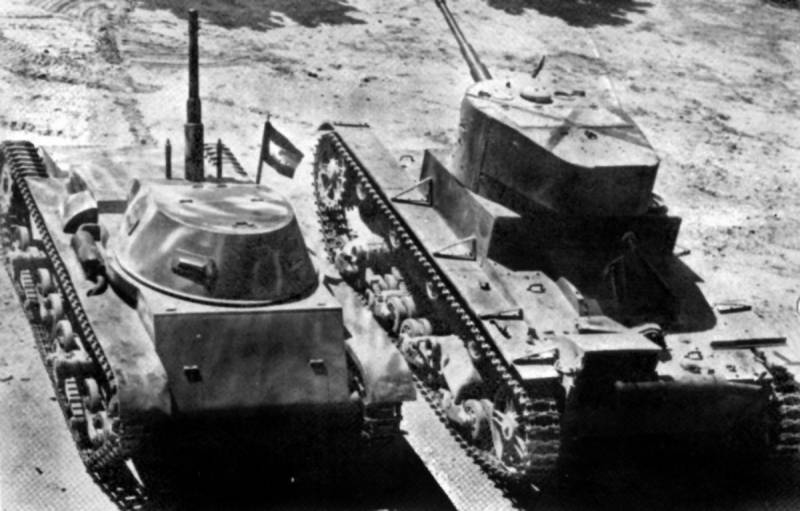
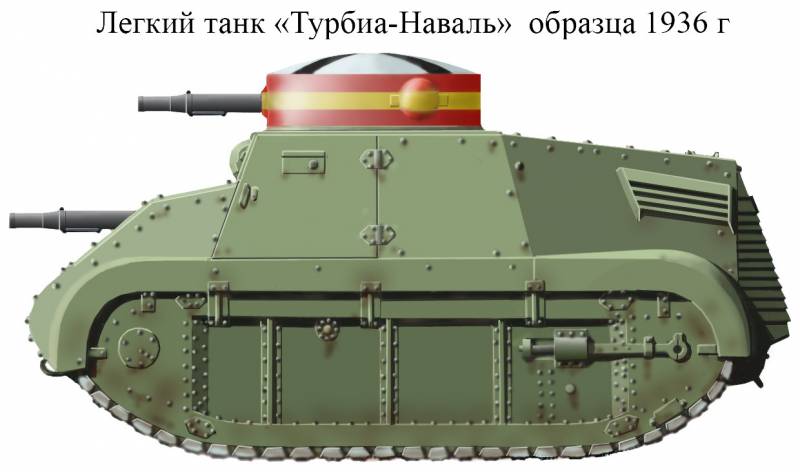
Information